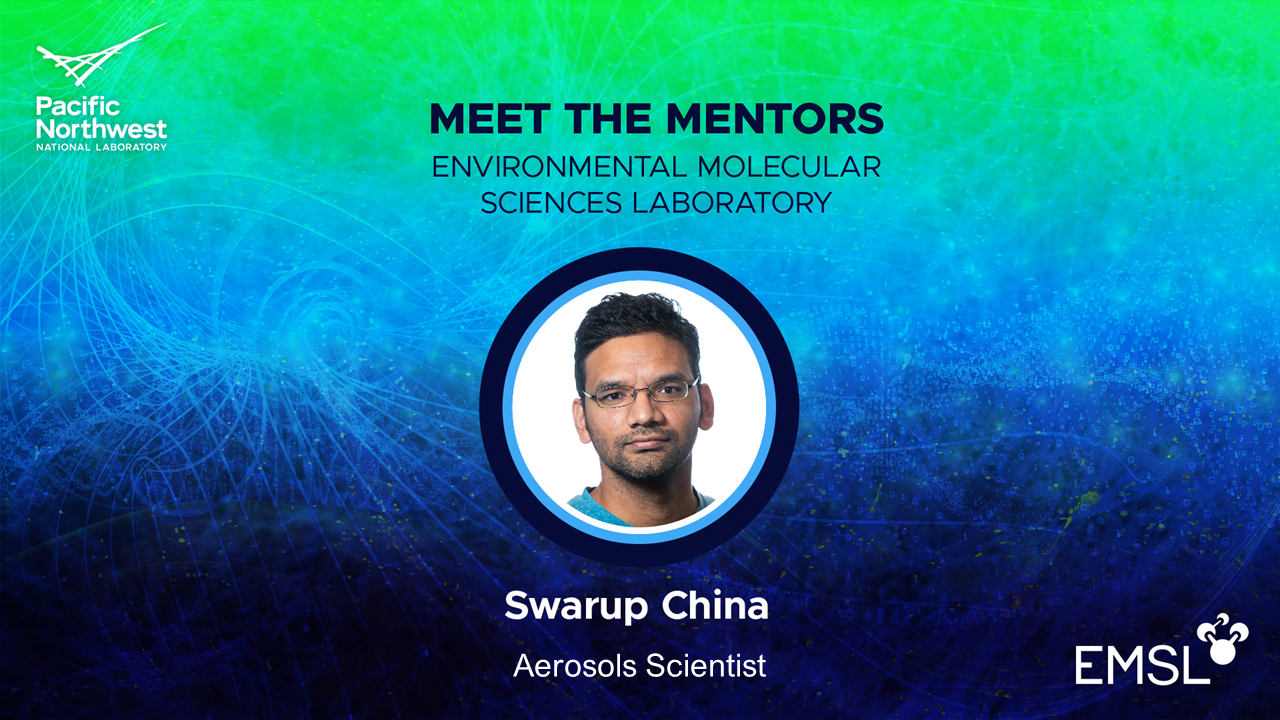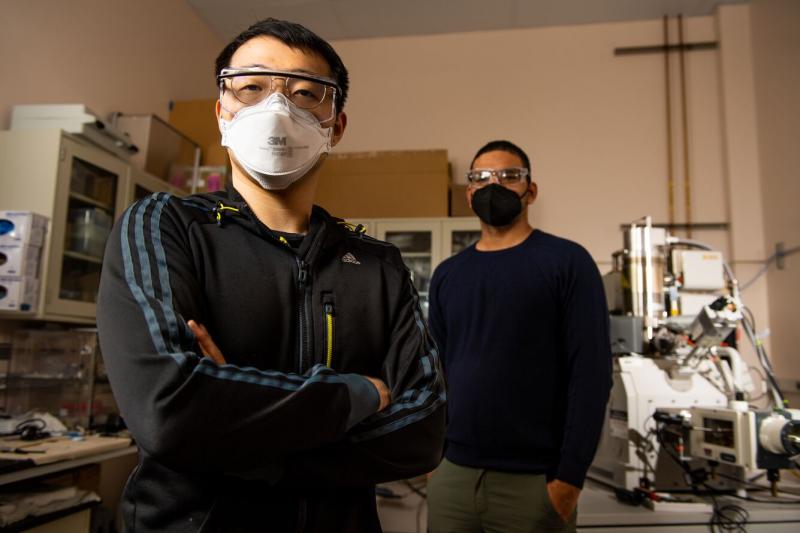Environmental Transformations and Interactions
Inspiring the Next Generation of Science Mentors
Aerosols scientist supports early career researchers

Swarup China’s research at the Environmental Molecular Sciences Laboratory (EMSL) has led to important revelations for understanding the chemical make-up of particles in the atmosphere that are vital for understanding and predicting annual precipitation, the impact of wildfire smoke on the environment, and climate change. But when asked about his most important accomplishments, China’s response is not one of his own research accomplishments, but the accomplishments of those he mentors in his lab.
“Swarup immediately celebrates the success of those around him,” said Gregory Vandergrift, a postdoctoral researcher and mentee of China. “He has lots to brag about. He is an expert on his research topics and has accomplished a lot in his career, but you would never hear him do that. All of us have career goals. One of Swarup’s career goals is valuing others around him.”
China has mentored a variety of students and staff members at EMSL, which have included over the last few years post-baccalaureate students, postdoctoral researchers, PhD interns, a student in the Office of Science Graduate Student Research program, and a student in the Science Undergraduate Laboratory Internships program.
In the lab, China and his team use tools like mass spectrometry and environmental scanning electron microscopes to identify and analyze the specific chemical make-up of compounds in the air, where those particles came from, and their potential impacts on the environment. The technical tools and readings needed for chemical composition analysis can be daunting for students fresh out of an undergraduate experience or may even be new to postdoctoral researchers coming into his lab. But China’s mentees said he always takes the time to answer questions, theorize solutions to research problems, and help guide them in the right direction.
Susan Mathai, a PhD intern, is currently working on wrapping up her first paper as a result of her research with China, which she will soon submit to academic journals for potential publishing. She said instead of taking her first drafts and completely re-writing sections himself, China takes the time to make comments and leads her to additional resources to help her get the information she needs to revise those sections. She said while this likely leads to a longer process, it is what allows for a more valuable learning environment and will aid in her future success as a research scientist.
“He takes the time to go over what needs to be amended and he encourages me,” she said. “He will do whatever he can to help you and make it work. He doesn’t do the work for you, which is really helpful when you’re in the process of learning. It helps teach you how to get to your own conclusion.”
Nurun Lata came to work with China first as a PhD student and now works in his lab as a postdoctoral researcher. She said what has been most valuable learning from and working with China is that he genuinely welcomes her opinion as a colleague.
“Even if he disagrees, he takes the time to understand where you are coming from, and he is good about helping you change the direction of your thoughts to get onto the right path,” she said. “Sometimes as researchers early in our career, we can think very simply about a topic, but he helps us to think bigger and think differently. He encourages us to think in critical ways.”
As he and his team work on projects ranging from studying the state of atmospheric particles in northern Alaska, to identifying how particles in the air emitted from wildfire smoke react to radiation from the sun, China said one of his favorite aspects about working as a scientist is having the opportunity to not only share expertise on his research, but also learning and growing right alongside his mentees.
“As a mentor, there is always room for improvement and there is no limit for learning,” he said.
China said he feels he learns more from his mentees than they learn from him.
“They ask lots of questions—sometimes even on topics I may not be thinking about,” he said. “It is important for me in my role to be hearing these questions so that I can apply those to my own work and also so I can continue to be a better mentor for them moving forward.”
China’s mentees said his passion for learning and growing in his field is contagious and makes them want to learn more about the topic at hand, in addition to learning tools they can apply to their own role as future mentors.

Before he came to EMSL, Zezhen Chang, a postdoctoral researcher, said he wasn’t sure how to operate and use the research instrument he is using now, but that China was immensely helpful and patient with his learning curve. He said China’s working style and role as a mentor has been so valuable that he will continue to use some of China’s exhibited traits in his own future role as a mentor.
“At the beginning, I had a lot of questions,” Chang said. “Swarup was always patient with me. I could also tell he had trained Nurun really well. He is a good mentor, and he shares his own experiences with us to benefit what we are learning and our own research. In the future, most of us will likely be in a similar position as a mentor to Swarup. We will carry out his characteristics to help future students and postdocs.”

